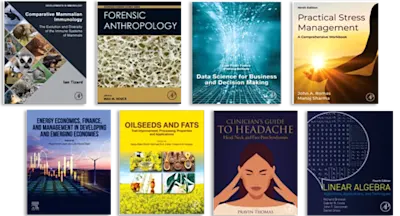
Emergency and Trauma Care for Nurses and Paramedics
- 1st Edition - August 15, 2011
- Imprint: Mosby Australia
- Authors: Kate Curtis, Clair Ramsden
- Language: English
- eBook ISBN:9 7 8 - 0 - 7 2 9 5 - 8 2 9 3 - 3
- eBook ISBN:9 7 8 - 0 - 7 2 9 5 - 7 9 8 2 - 7
Emergency and Trauma Care is written for Australian emergency care providers including paramedics, emergency nurses, pre-hospital care providers, nurse practitioners, genera… Read more

Purchase options

Institutional subscription on ScienceDirect
Request a sales quoteThis book follows the patient journey from pre-hospital to definitive care. Using a body systems approach, each chapter provides comprehensive coverage of all aspects of adult and paediatric emergencies. Implications for clinical practice is supported by chapters of professional practice, clinical skills, research, evidence-based practice, and legal, ethical and cultural issues. Clinical assessment, physiology, management and rationale for intervention of common and not so common emergency presentations are provided, with each chapter providing clear and relevant examples for both Paramedics and Nurses.
Emergency and Trauma Care brings together a team of highly respected clinical practitioners and academics to deliver the most up-to-date text dealing with the practical procedures and evidence experienced by emergency and trauma care providers every day.
- Chapter 2 Pre-hospital care overview in Australia and NZ
- Chapter 10 Scene assessment, management and rescue
- Chapter 11 Pre-Hospital Clinical Reasoning, Triage and Communication
- Pre-hospital and emergency nursing considerations included in all relevant chapters
- Chapter 5 Cultural Considerations in Emergency Care addresses cultural diversity, beliefs and values and focuses on Aboriginal and Torres Strait Islander health and Maori health
- Chapter 19 Resuscitation includes advanced life support, airway management and incorporates the 2010 Australian Resuscitation Council guidelines
- Chapter 37 People with disabilities provides assessment, examination and communication strategies for working with clients with intellectual and physical disabilities
- Section 5 focuses on examination and communication strategies for working with unique population groups, including the elderly, disabled, obstetric and paediatric patients
- Section 6 details major trauma assessment and management, blast injury, and trauma to specific body regions
- Essentials outline the main points addressed in each chapter
- Practice tips assist with communication skills, procedures and assessment
- Case studies supported by questions throughout
- Summaries and Key points, review questions, web links and references provide for consolidation and further research.
- Evolve resources include Power point slides, 30 additional Case studies, image bank, web links
- Three paramedic specific chapters (including scene assessment and management)
Section 1 Overview of emergency care
Chapter 1: Emergency nursing and the practice environment
Chapter 2: Pre-hospital care overview in Australia and New Zealand
Section 2 Professional practice
Chapter 3: Clinical ethics for emergency healthcare
Chapter 4: Emergency care and the law
Chapter 5: Cultural considerations in emergency care
Chapter 6: Management and leadership
Section 3 Systems and clinical fundamentals
Chapter 7: Professional development
Chapter 8: Research for emergency care
Chapter 9: Patient education
Chapter 10: Scene assessment, management and rescue
Chapter 11: Pre-hospital clinical reasoning, triage and communication
Chapter 12: Major incident preparedness management
Chapter 13: Emergency nursing triage
Chapter 14: Patient assessment and essentials of care
Chapter 15: Resuscitation
Chapter 16: Stabilisation and transfer
Chapter17: Clinical skills
Chapter18: Minor injury and management
Chapter19: Pain management
Chapter 20:Physiology for emergency care
Section 4 Emergencies
Chapter 21:Respiratory emergencies
Chapter 22: Cardiovascular emergencies
Chapter 23: Neurological emergencies
Chapter 24:Gastrointestinal emergencies
Chapter 25: Renal and genitourinary emergencies
Chapter 26: Endocrine emergencies
Chapter 27: Infectious and communicable diseases
Chapter 28: Pandemics and environmental emergencies
Chapter 29: Haematological emergencies
Chapter 30: Toxicological emergencies
Chapter 31: Envenomation
Chapter 32: Dental, ear, nose and throat emergencies
Chapter 33: Ocular emergencies and trauma
Chapter 34: Gynaecological emergencies
Section 5 Unique populations
Chapter 35: Obstetric emergencies
Chapter 36: Paediatric emergencies
Chapter 37: Mental health emergencies
Chapter 38: People with disabilities
Chapter 39: The older person
Chapter 40: Violence, abuse and assault
Chapter 41: Alcohol, tobacco and other drug use
Section 6 Major trauma
Chapter 42: An overview of trauma
Chapter 43: Mechanisms of injury
Chapter 44: Major trauma initial assessment and management
Chapter 45: Traumatic brain injury
Chapter 46: Faciomaxillary trauma
Chapter 47: Thoracic and neck trauma
Chapter 48: Abdominal and genitourinary trauma
Chapter 49: Spinal trauma
Chapter 50: Major orthopaedic and neurovascular trauma
Chapter 51: Blast injury
Chapter 52: Burns trauma
Section 7 End of life
Chapter 53: Death and dying
Chapter 54: Organ and tissue donation
- Edition: 1
- Published: August 15, 2011
- Imprint: Mosby Australia
- Language: English
- eBook ISBN: 9780729582933
- eBook ISBN: 9780729579827
KC
Kate Curtis
CR